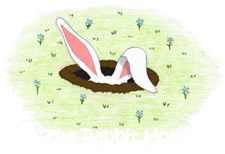 [Following the rabbit hole from today’s Monday Morning Memo, will lead you to this fine piece of Wizardly Wisdom. We teach this to our clients, and this week Roy Williams shares it with all who follow the rabbit. -Dave]
[Following the rabbit hole from today’s Monday Morning Memo, will lead you to this fine piece of Wizardly Wisdom. We teach this to our clients, and this week Roy Williams shares it with all who follow the rabbit. -Dave]
By Roy H. Williams
It’s a question asked by business owners in every town, village and hamlet. It’s asked by the cautious, the anxious, and the wise. It’s asked of every newspaper, television and radio rep.
“How many ads will I have to run before I begin seeing results?”
The number of ads you’ll have to run before you begin seeing results depends on your product purchase cycle and the impact of your message.
Product Purchase Cycle refers to how often the average person buys the product. The shorter the product purchase cycle, the quicker you’ll see results.
EXAMPLE: Let’s say 120,000 mattresses were sold last year in my market of 1,000,000 people.
To determine the Product Purchase Cycle for a category:
1. Divide the population of the trade area by the annual transaction count for the category. (1,000,000/120,000 = 8.33)
2. This is your annual Product Purchase Cycle. (8.33 years would be the annual product purchase cycle for mattresses.)
To determine the Percentage of Population Currently in the Market for a product:
1. Divide the annual transaction count for the category by the population of the trade area. (120,000/1,000,000 = .12)
2. Move the decimal 2 places to the right. This is the percentage of your population that will be in the market for the product this year. (12 percent)
3. Divide that percentage by 52 and to see how many customers will be in the market for that product this week. (12/52 = 0.23 percent of the population will buy a mattress this week.)
To determine the Annual Transaction Count for any category in your trade area:
1. Google to find the number of units sold in America each year.
2. Divide by the population of the US to get a number per capita
3. Multiply the per capita number by the population of your trade area.
If you were to begin a high frequency, high-impact radio campaign this morning, you could overflow any restaurant in your city this evening. No problem. This is because 100 percent of the population eats every day and a high percentage of us are willing to eat out tonight. But how many of us are looking for a new mattress?
Results can be delivered quickly when the Product Purchase Cycle is short. The longer the product purchase cycle, the longer it’s going to take for the campaign to gain momentum.
1. Any ad for a product the customer doesn’t currently need is, by definition, a low-impact ad. Regardless of what the ad says, its relevance will be lower among customers who feel no need. This means your campaign will take longer to get results.
2. Weeks from now, when you’ve finally delivered enough repetition of your low-impact ad for it to be remembered when the customer finally needs the product, we have a new problem: We have to wait for the customer to need it.
Bottom line: If your product has a short product purchase cycle, create an offer with real impact and make certain the same person hears the same message at least 3 times within 7 nights sleep.
But if your product has a long purchase cycle, you’re going to need to make a 52-week commitment to a media provider. Any attempt to “test the waters” with a short-term schedule will likely end in disaster.
Impact and frequency alone aren’t enough to overcome a long purchase cycle.
The missing ingredient is commitment.
Roy H. Williams

Hi Roy, I do agree. Impact and frequency alone aren’t enough to overcome a long purchase cycle.
– Mathew J.